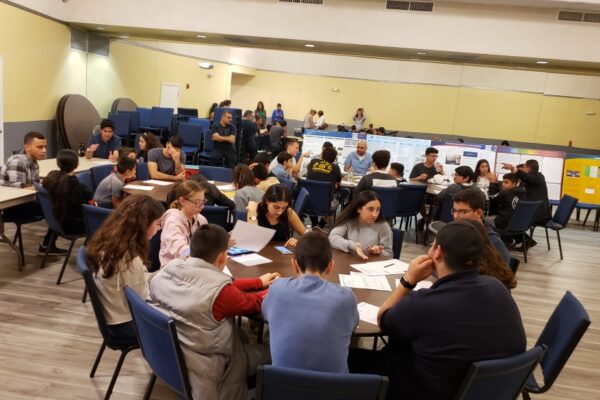Imagine a world where your thoughts control machines, clean energy powers cities without a hitch, and diseases are caught years before symptoms appear. Sounds like science fiction, right? Well, 2025 is turning these dreams into reality. As a science enthusiast who’s spent years geeking out over breakthroughs, I’m thrilled to share seven advancements that’ll leave you speechless. From fusion energy to brain-computer interfaces, these innovations are reshaping our future. Let’s dive in and explore what’s coming!
Fusion Energy: Powering a Cleaner Tomorrow
Fusion energy has been the holy grail of clean power for decades, and 2025 is finally bringing it closer to reality. Scientists are making reactors that mimic the sun’s energy production, creating near-limitless electricity without carbon emissions. This year, projects like South Korea’s KSTAR and France’s ITER are hitting milestones, producing more energy than they consume for longer periods.
Why Fusion Matters
Fusion could solve our energy crisis, slashing reliance on fossil fuels. In 2025, pilot plants are being tested, with South Korea and the US leading the charge. It’s not just about cleaner air—it’s about stable, affordable power for all. Imagine charging your electric car with energy from seawater!
- Impact: Near-infinite clean energy.
- Challenges: High costs and extreme heat resistance for reactor materials.
- Where to Learn More: Check out ITER’s official site for updates.
Quantum Internet: Unhackable Communication
Picture sending a message that no hacker could ever crack. That’s the promise of quantum internet, Cecilia. In 2025, cities like Singapore and Boston are testing quantum communication networks using entangled particles for ultra-secure data transfer. This could revolutionize privacy for everything from banking to personal emails.
The Quantum Leap Forward
Quantum networks use the spooky properties of quantum mechanics to ensure security. A consortium of universities launched a pilot network in 2025, connecting three cities with unhackable links. It’s a game-changer for cybersecurity, though scaling it globally remains a hurdle.
- Pros: Unbreakable encryption, faster data transfer.
- Cons: Expensive infrastructure, limited range.
- Best Tools: Explore quantum startups like ID Quantique for cutting-edge solutions.
Brain-Computer Interfaces: Mind Meets Machine
Ever wished you could control your phone with your thoughts? Brain-computer interfaces (BCIs) are making that possible in 2025. Non-invasive headbands and minimally invasive implants, like China’s NEO system, are enabling paralyzed individuals to perform tasks like eating independently by translating brain signals into digital commands.
The Future of Human-Machine Interaction
BCIs are transforming healthcare and gaming. Companies like Neurable are developing wearable BCIs for device control, while medical trials are restoring communication for paralysis patients. The tech is still niche, but 2025 is seeing rapid progress.
- Applications: Prosthetics, VR gaming, neurological treatment.
- Where to Get It: Look into Synchron’s BCI solutions for the latest advancements.
CRISPR 3.0: Gene Editing Gets Precise
CRISPR gene-editing technology is evolving in 2025, with prime and base editing offering pinpoint accuracy. From curing genetic blindness to developing drought-resistant crops, CRISPR is tackling diseases and food security. A recent study restored vision in patients with inherited blindness, a monumental step forward.
Revolutionizing Medicine and Agriculture
CRISPR’s precision reduces off-target effects, making it safer for medical and agricultural use. However, ethical concerns, like editing human embryos, spark debate. Still, 2025 is proving its potential to transform lives.
- Pros: Cures for genetic diseases, resilient crops.
- Cons: Ethical dilemmas, high costs.
- Learn More: Visit CRISPR Therapeutics for insights.
AI-Driven Healthcare: Diagnosing the Future
Artificial intelligence is revolutionizing healthcare in 2025, detecting diseases like cancer and Alzheimer’s years before symptoms. AI tools like “Immunocure” target cancer cells with precision, reducing side effects compared to chemotherapy. These systems analyze vast datasets for early diagnosis and personalized treatments.
A New Era of Medicine
AI’s ability to spot patterns in medical imaging outpaces human doctors, improving outcomes. In 2025, AI is also designing drugs faster, with KAIST’s BInD model creating cancer-targeting compounds from scratch. The catch? Data quality and bias remain challenges.
- Impact: Earlier diagnoses, tailored therapies.
- Best Tools: Explore DeepMind’s health solutions for AI innovations.
Lab-Grown Organs: The Transplant Revolution
In 2025, lab-grown organs made from patients’ stem cells are being implanted, nearly eliminating rejection risks. This breakthrough, led by bio-printing advancements, could end transplant waiting lists. Early successes include functional livers and kidneys.
Saving Lives with Science
This technology promises to save millions by providing custom organs. However, scaling production and ensuring long-term safety are hurdles. Still, 2025 is a turning point for regenerative medicine.
- Pros: No rejection, faster transplants.
- Cons: High costs, regulatory challenges.
- Where to Start: Check Organovo for bio-printing updates.
Space-Based Solar Power: Energy from Orbit
Solar panels in space are beaming energy to Earth in 2025, solving the issue of nighttime energy drops. Satellites in geostationary orbit capture sunlight and send it via microwaves to ground stations. This innovation could provide uninterrupted renewable power.
Powering the Planet from Space
Space-based solar offers constant energy, unlike ground-based systems. Tests in 2025 are proving its viability, though launch costs and infrastructure are steep. The future of clean energy is looking bright—literally.
- Impact: Reliable renewable energy.
- Challenges: High launch costs, complex maintenance.
- Learn More: Visit NASA’s solar power page for details.
Comparing the Breakthroughs
| Advancement | Field | Key Benefit | Major Challenge |
|---|---|---|---|
| Fusion Energy | Energy | Near-infinite clean power | Material durability |
| Quantum Internet | Communications | Unhackable data transmission | Scalability |
| Brain-Computer Interfaces | Neuroscience | Mind-controlled devices | Accessibility |
| CRISPR 3.0 | Biotechnology | Precise gene editing | Ethical concerns |
| AI-Driven Healthcare | Healthcare | Early disease detection | Data quality |
| Lab-Grown Organs | Regenerative Medicine | No-rejection transplants | Production scale |
| Space-Based Solar Power | Energy | Constant renewable energy | Launch costs |
Why These Matter
Each breakthrough addresses a global challenge—energy, health, or communication. Fusion and solar power tackle climate change, while BCIs and CRISPR improve quality of life. Quantum internet and AI protect and enhance our digital world, and lab-grown organs save lives. Together, they’re building a better future.
People Also Ask (PAA)
What are the biggest scientific breakthroughs expected in 2025?
The top breakthroughs include fusion energy, quantum internet, BCIs, CRISPR advancements, AI healthcare, lab-grown organs, and space-based solar power, each pushing boundaries in energy, health, and technology.
How will fusion energy impact the environment?
Fusion energy could drastically cut carbon emissions by providing clean, abundant electricity, reducing reliance on fossil fuels and helping combat climate change.
Are brain-computer interfaces safe?
BCIs, especially non-invasive ones, are showing safety in trials, but long-term effects of implants need more research. Companies like Synchron prioritize safety in 2025 trials.
Where can I learn about CRISPR technology?
Explore CRISPR Therapeutics or Nature’s CRISPR page for detailed insights into this revolutionary technology.
Pros and Cons of 2025’s Advancements
- Pros:
- Cleaner energy solutions (fusion, solar).
- Life-saving medical advances (CRISPR, organs, AI).
- Enhanced security and connectivity (quantum internet, BCIs).
- Global problem-solving potential.
- Cons:
- High costs and scalability issues.
- Ethical concerns (CRISPR, BCIs).
- Regulatory and safety hurdles.
- Accessibility limited to developed regions initially.
FAQ
What is fusion energy, and why is it important in 2025?
Fusion energy mimics the sun’s power generation, offering clean, nearly limitless electricity. In 2025, it’s hitting key milestones, promising a sustainable energy future.
How do brain-computer interfaces work?
BCIs translate brain signals into digital commands, enabling device control or communication. Non-invasive headbands and implants are advancing rapidly in 2025.
Are lab-grown organs available now?
In 2025, lab-grown organs are in early implantation trials, using stem cells to create rejection-free organs. They’re not widely available but show huge promise.
What tools can I use to explore quantum computing?
Check out IBM Quantum or Google Quantum AI for resources and tools to dive into quantum technology.
How will AI improve healthcare in 2025?
AI will enhance diagnostics, detect diseases early, and design personalized treatments, with tools like Immunocure revolutionizing cancer care.
A Personal Reflection
As a kid, I dreamed of a world where science solved our biggest problems. In 2025, that dream feels closer than ever. I remember visiting a solar farm years ago, marveling at its potential but frustrated by its limitations. Now, with space-based solar and fusion on the horizon, it’s humbling to see how far we’ve come. These advancements aren’t just lab experiments—they’re hope for a cleaner, healthier planet. Which one excites you the most? Let’s keep the conversation going as we step into this bold new future.





